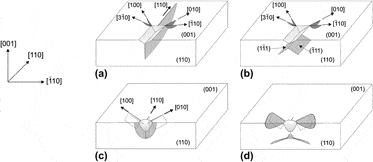Crossref Citations
This article has been cited by the following publications. This list is generated based on data provided by
Crossref.
Pouvreau, Cédric
Wasmer, Kilian
Hessler-Wyser, Haïcha
Ganière, Jean-Daniel
Breguet, Jean-Marc
Michler, Johann
Schulz, Daniel
and
Giovanola, Jacques Henri
2013.
Nanoindentation cracking in gallium arsenide: Part II. TEM investigation.
Journal of Materials Research,
Vol. 28,
Issue. 20,
p.
2799.
Wasmer, Kilian
Pouvreau, Cédric
Breguet, Jean-Marc
Michler, Johann
Schulz, Daniel
and
Giovanola, Jacques Henri
2013.
Nanoindentation cracking in gallium arsenide: Part I. In situ SEM nanoindentation.
Journal of Materials Research,
Vol. 28,
Issue. 20,
p.
2785.
Huang, Hu
and
Zhao, Hongwei
2015.
Non-ideal assembly of the driving unit affecting shape of load-displacement curves.
Measurement Science and Technology,
Vol. 26,
Issue. 3,
p.
035601.
Gu, Chunju
Katti, Dinesh R.
and
Katti, Kalpana S.
2016.
On-site SEM and nanomechanical properties of human OI bone.
Bioinspired, Biomimetic and Nanobiomaterials,
Vol. 5,
Issue. 3,
p.
106.
Cai, Xiaolong
Xu, Yunhua
Zhong, Lisheng
and
Liu, Mingxin
2017.
Fracture toughness of WC-Fe cermet in W-WC-Fe composite by nanoindentation.
Journal of Alloys and Compounds,
Vol. 728,
Issue. ,
p.
788.
Trabadelo, V.
Pathak, S.
Saeidi, F.
Parlinska-Wojtan, M.
and
Wasmer, K.
2019.
Nanoindentation deformation and cracking in sapphire.
Ceramics International,
Vol. 45,
Issue. 8,
p.
9835.
Wang, Ke
Jiang, Feng
Li, Yaning
Wang, Ningchang
Hu, Zhongwei
Yan, Lan
Lu, Jing
Wen, Qiuling
and
Lu, Xizhao
2020.
Prediction of pop-in load for sapphires with different crystal orientations.
Ceramics International,
Vol. 46,
Issue. 5,
p.
6682.
Ast, J.
Schwiedrzik, J.J.
Rohbeck, N.
Maeder, X.
and
Michler, J.
2020.
Novel micro-scale specimens for mode-dependent fracture testing of brittle materials: A case study on GaAs single crystals.
Materials & Design,
Vol. 193,
Issue. ,
p.
108765.
Muszalski, Jan
Sankowska, Iwona
and
Kucharski, Stanisław
2020.
Nanoindentation of GaAs/AlAs distributed bragg reflector grown on GaAs substrate.
Materials Science in Semiconductor Processing,
Vol. 109,
Issue. ,
p.
104912.
Burley, M
and
Clyne, TW
2020.
Evaluation of the fracture energy of magnesium via ballistic impact experiments.
Materialia,
Vol. 10,
Issue. ,
p.
100652.
Juri, Afifah Z.
Basak, Animesh K.
and
Yin, Ling
2021.
Microstructural responses of Zirconia materials to in-situ SEM nanoindentation.
Journal of the Mechanical Behavior of Biomedical Materials,
Vol. 118,
Issue. ,
p.
104450.
Moulins, Anthony
Dugnani, Roberto
and
Zednik, Ricardo J.
2021.
Fracture surface analysis and quantitative characterization of gallium arsenide III-V semiconductors using fractography.
Engineering Failure Analysis,
Vol. 123,
Issue. ,
p.
105313.
Moulins, Anthony
Dugnani, Roberto
and
Zednik, Ricardo J
2023.
Anisotropic fracture energy and toughness of single crystal gallium arsenide by microindentation.
Engineering Fracture Mechanics,
Vol. 292,
Issue. ,
p.
109631.
